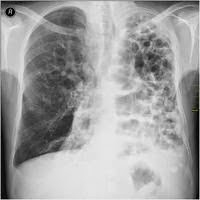A group of students and a professor of neuroscience have discovered that Oreo cookies may be
as addictive as cocaine or morphine – to lab rats at least.
Joseph Schroeder, PhD, and his students at Connecticut College (New London) were conducting research on the addictiveness of high-fat and high-sugar foods, and
how, for instance, they may contribute to the obesity epidemic. “Our research supports the theory that
high-fat, high-sugar foods stimulate the brain in the same way that drugs do. It may explain why some people can’t
resist these foods despite the fact that they know they are bad for them,” said Schroeder.
One of the students,
Jamie Honohan (who has since graduated with a BA in Behavioral Neuroscience), was particularly interested in
human motivation and food, and how the obesity epidemic may be linked to the prevalence of high-fat, high-sugar
foods in low-income neighborhoods. It was her idea to use Oreos, as she explained: “We chose Oreos not only
because they are America’s favorite cookie, and highly palatable to rats, but also because products containing high
amounts of fat and sugar are heavily marketed in communities with lower socioeconomic statuses.”
The results of
their study were presented at the Society for Neuroscience conference that that took place in early November
in San Diego. The study shows that for rats, the association between the pleasurable effects of eating
Oreos and a specific environment were as strong as for cocaine or morphine and a specific environment. For their
study, the students gave Oreos to hungry rats on one side of a maze, and on the other side of the maze they gave
them a “control” food, in this case, rice cakes (Schroeder comments that like humans, rats do not seem to relish
rice cakes very much). Then they gave the rats the option to go to either side of the maze (without the food
present), and measured how long they spent on the
side where they were typically fed with Oreos compared with the
side they were fed with rice cakes.
The researchers then repeated the experiment with another group of
rats. This time, instead of feeding them Oreos and rice cakes, they injected them with addictive drugs – such as
cocaine and morphine – when they were on one side of the maze, or saline, when they were on the other side. And
finally, one interesting observation – it seems that just like humans, rats eat the middle of an Oreo first.
POSTED BY: Steven
Almany M.D.







